1. Smilodon (Saber-Toothed Cat)

iStock
Known as the saber-toothed tiger, Smilodon was a formidable predator with long, dagger-like canine teeth. These Ice Age cats roamed the Americas and coexisted with early humans, who likely feared and respected them. Weighing up to 600 pounds, they were built for ambush hunting, using their teeth to deliver fatal wounds to prey. Fossil evidence suggests they hunted large herbivores, putting them in direct competition with human hunters. The Smilodon’s story reminds us of the challenges early humans faced while navigating a world filled with predators that could easily turn them into prey. Their extinction around 10,000 years ago marked the end of an era for one of nature’s most iconic big cats.
2. Woolly Mammoth
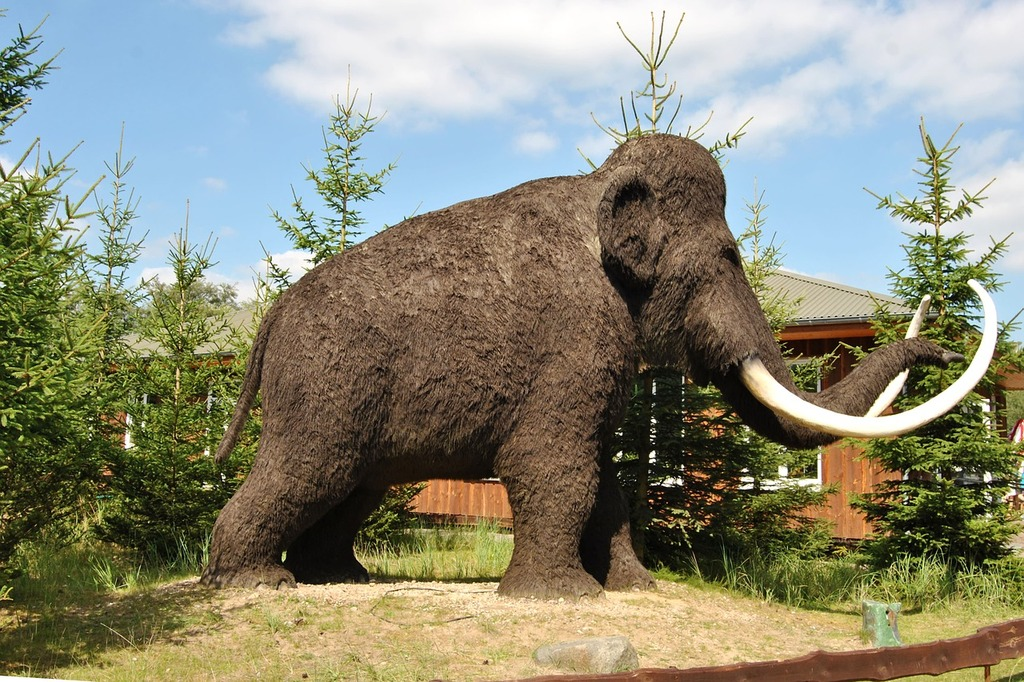
GetArchive
The woolly mammoth is one of the most iconic Ice Age animals, often depicted in human cave art. These massive, shaggy-haired relatives of modern elephants stood up to 13 feet tall and weighed over six tons. Early humans hunted them for their meat, fur, and bones, which were used for tools and shelter. Despite their size, they were vulnerable to both human hunting and changing climates. The mammoth played a crucial role in human survival during harsh Ice Age winters, providing vital resources. Their coexistence with humans highlights humanity’s resourcefulness but also serves as an early example of human impact on species survival, as overhunting and environmental shifts likely contributed to their extinction.
3. Megalania
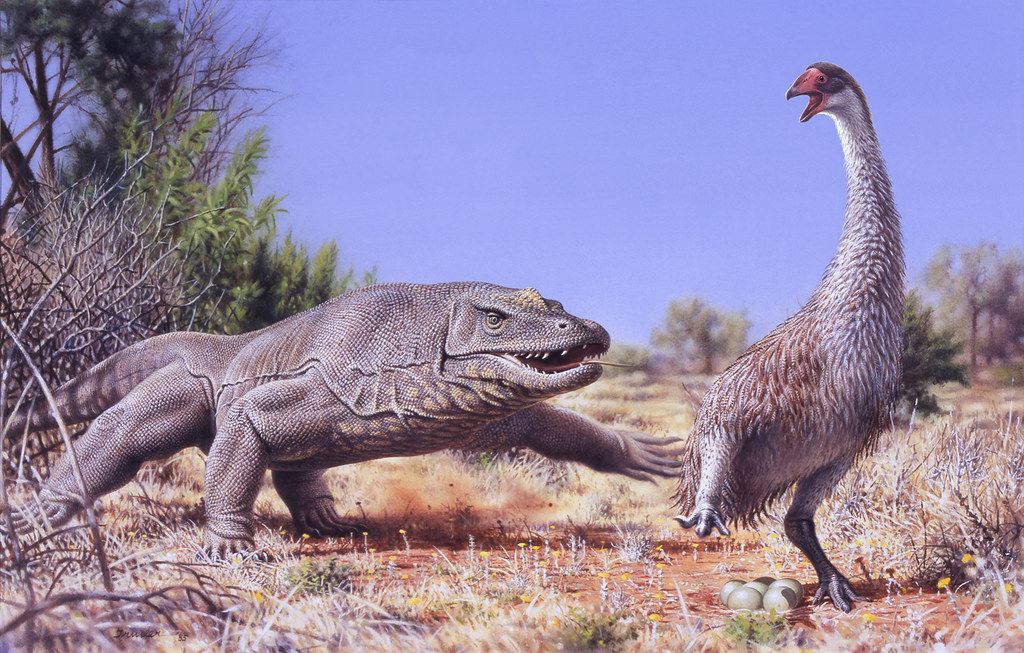
Flickr
Imagine a giant lizard over 20 feet long, prowling ancient Australia. That’s Megalania, a massive monitor lizard that likely hunted large mammals and possibly early humans. With sharp teeth and a venomous bite, it was a predator to be feared. Indigenous Australian legends of giant lizards might be remnants of encounters with this prehistoric beast. Megalania’s ability to take down large prey and its likely position at the top of the food chain made it a formidable presence. Its existence underscores the dangers early humans faced in a world where they weren’t always the apex predators and had to adapt quickly to survive.
4. Glyptodon

Wikimedia Commons
Glyptodon, a car-sized relative of the armadillo, roamed South America during the Ice Age. Covered in a protective shell and equipped with a spiked tail, it was a herbivore that early humans likely hunted. These creatures were a valuable resource, providing meat and armor-like shells for shelter or protection. Glyptodon lived in open habitats near water sources, making it a frequent target for human hunters. Their extinction aligns with the arrival of humans, suggesting a complex relationship between survival and environmental impact. Glyptodon’s tale is a fascinating glimpse into the interconnectedness of prehistoric ecosystems and the ingenuity of early humans in utilizing available resources.
5. Giant Ground Sloth

iStock
The giant ground sloth was a slow-moving herbivore the size of an elephant. These gentle giants were likely a source of food for early humans, but their massive claws also made them formidable when threatened. Found across the Americas, they were key players in their ecosystems, shaping vegetation through their grazing habits. Early humans are thought to have hunted them extensively, leading to their eventual extinction. The overlap of their decline with human expansion raises questions about how much of their extinction was due to hunting versus climate changes. Their disappearance serves as a poignant reminder of the fragile balance between human activity and environmental sustainability.
6. Dire Wolf
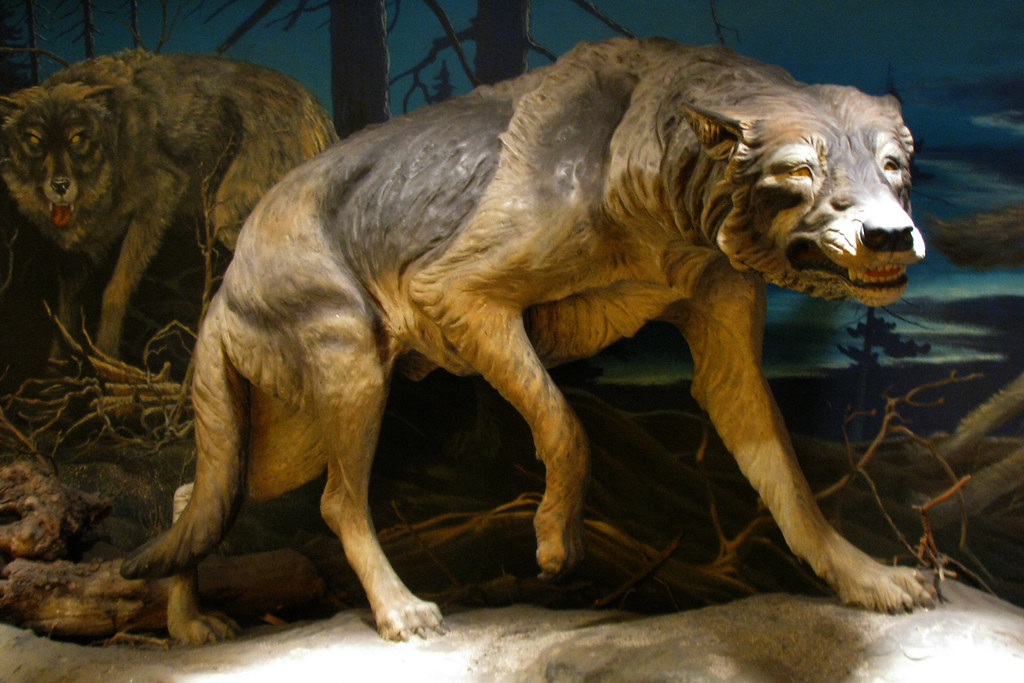
Flickr
Before becoming a pop culture icon, dire wolves roamed North and South America alongside early humans. Larger and more robust than modern wolves, they hunted large prey and scavenged carcasses. Early humans may have competed with them for food, and it’s even possible they domesticated smaller wolf species to help fend off dire wolves. Fossil evidence from tar pits reveals dire wolves lived in highly competitive environments. Their strength, sharp teeth, and pack behavior made them a significant threat. The story of the dire wolf is one of survival and adaptation, both for them and the humans who shared their world.
7. Titanoboa

Flickr
Imagine a snake over 40 feet long and weighing over a ton—that was Titanoboa. Though it lived earlier than most prehistoric animals on this list, its legacy as the largest snake ever remains terrifying. Found in the swamps of South America, it preyed on crocodiles and other large animals. Titanoboa thrived in a world of warm, humid climates, dominating its ecosystem. While there’s no evidence of humans encountering Titanoboa directly, its size and predatory nature are a reminder of the awe-inspiring reptiles that shaped ancient ecosystems. Even today, Titanoboa captures the imagination as a symbol of prehistoric gigantism.
8. Short-Faced Bear
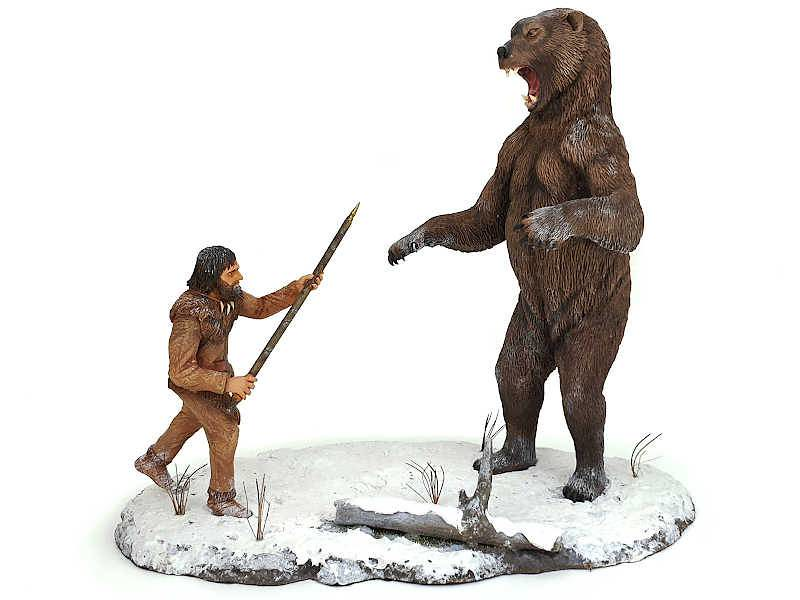
Wikimedia Commons
The short-faced bear was one of the largest carnivorous mammals ever, standing up to 12 feet tall on its hind legs. Found in the Americas, it coexisted with humans who must have regarded it as a serious threat. Its long limbs were built for speed, making it a highly efficient predator and scavenger. With powerful jaws and immense strength, it could easily overpower most prey—including humans. The decline of the short-faced bear aligns with human expansion, suggesting that competition for food and habitat played a role in its extinction. Its story reflects the constant struggle for dominance in the prehistoric world.
9. Entelodont (“Hell Pig”)
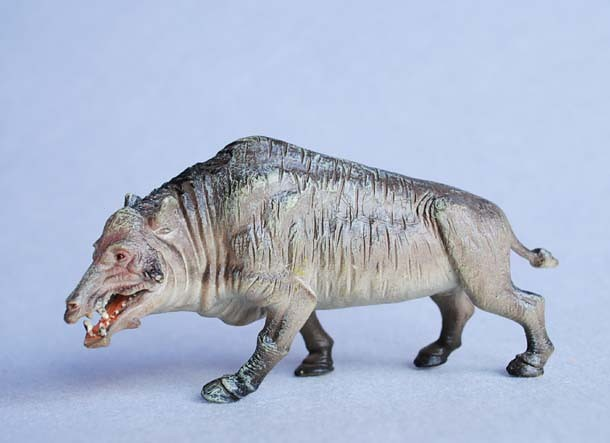
Flickr
Don’t let the nickname fool you; entelodonts weren’t pigs but massive, carnivorous relatives of modern hippos. Found in Eurasia and North America, these beasts had large heads, sharp teeth, and a terrifying appearance. Early humans likely encountered them while competing for resources in shared environments. Fossil evidence suggests they were aggressive, opportunistic feeders, willing to eat anything from plants to carcasses. The fearsome appearance of entelodonts, coupled with their unpredictable nature, made them formidable animals to coexist with. They serve as a vivid example of the diversity and danger of prehistoric wildlife.
10. Megatherium
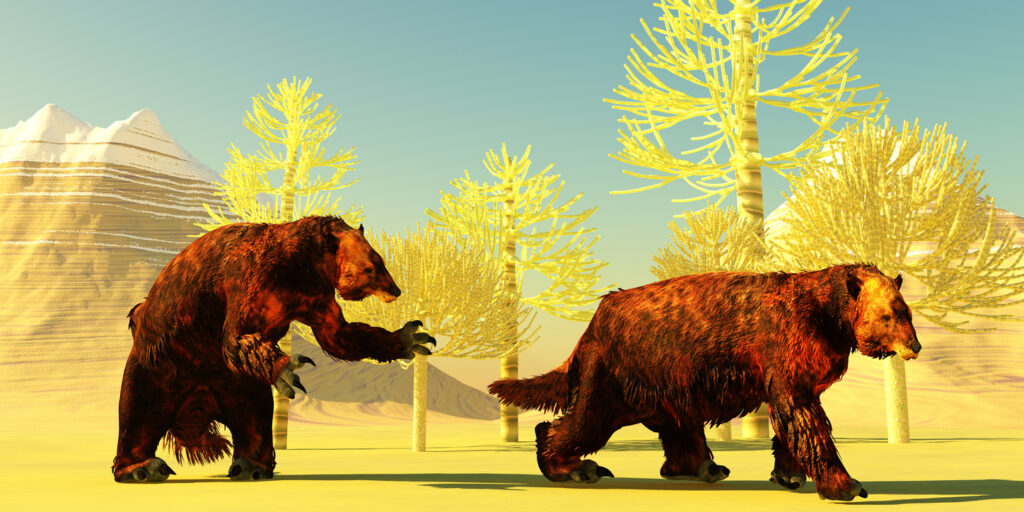
iStock
Another giant ground sloth, Megatherium was even larger than its relatives, reaching over 20 feet in length and weighing several tons. Found in South America, it likely coexisted with early human populations. While primarily herbivorous, its size and strength made it a formidable presence that few predators could challenge. Early humans might have hunted Megatherium for its meat and hide, contributing to its extinction. Fossil evidence suggests these interactions were part of a larger pattern of human influence on megafaunal populations. Megatherium’s story highlights the delicate balance between coexistence and exploitation in prehistoric times.
11. Saber-Toothed Salmon
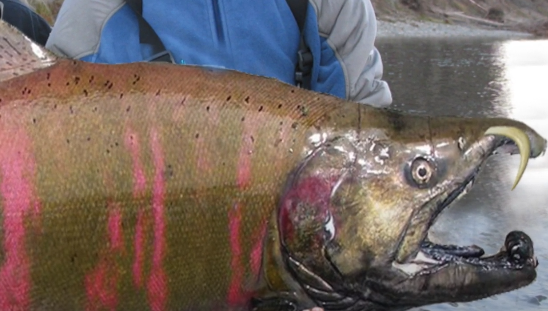
YouTube
Yes, you read that right—a salmon with saber-like teeth. Found in North America’s ancient rivers, these massive fish reached lengths of up to 9 feet. Early humans fishing in these waters must have been both awed and cautious. The saber-toothed salmon’s unusual features and size made it a unique challenge to hunt and a remarkable part of the ecosystem. While not a direct threat to humans, its presence underscores the diversity of prehistoric aquatic life. Its fossils remind us of the vast, strange creatures that populated Earth’s waters and the ingenuity humans displayed in adapting to such environments.
12. Mammoth Steppe Lion

Flickr
Also known as the cave lion, this massive feline roamed Europe, Asia, and North America. Larger than today’s lions, it was a top predator that hunted large mammals, often competing with humans for prey. Cave paintings and artifacts suggest early humans both feared and admired these animals, depicting them with a sense of reverence. The Mammoth Steppe Lion’s strength, agility, and sharp instincts made it a formidable predator. Its story showcases the challenges of living alongside powerful predators and the resilience humans needed to survive in such a perilous world.


